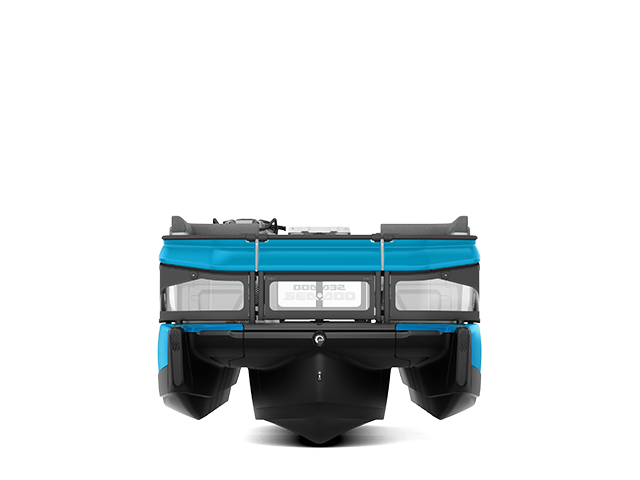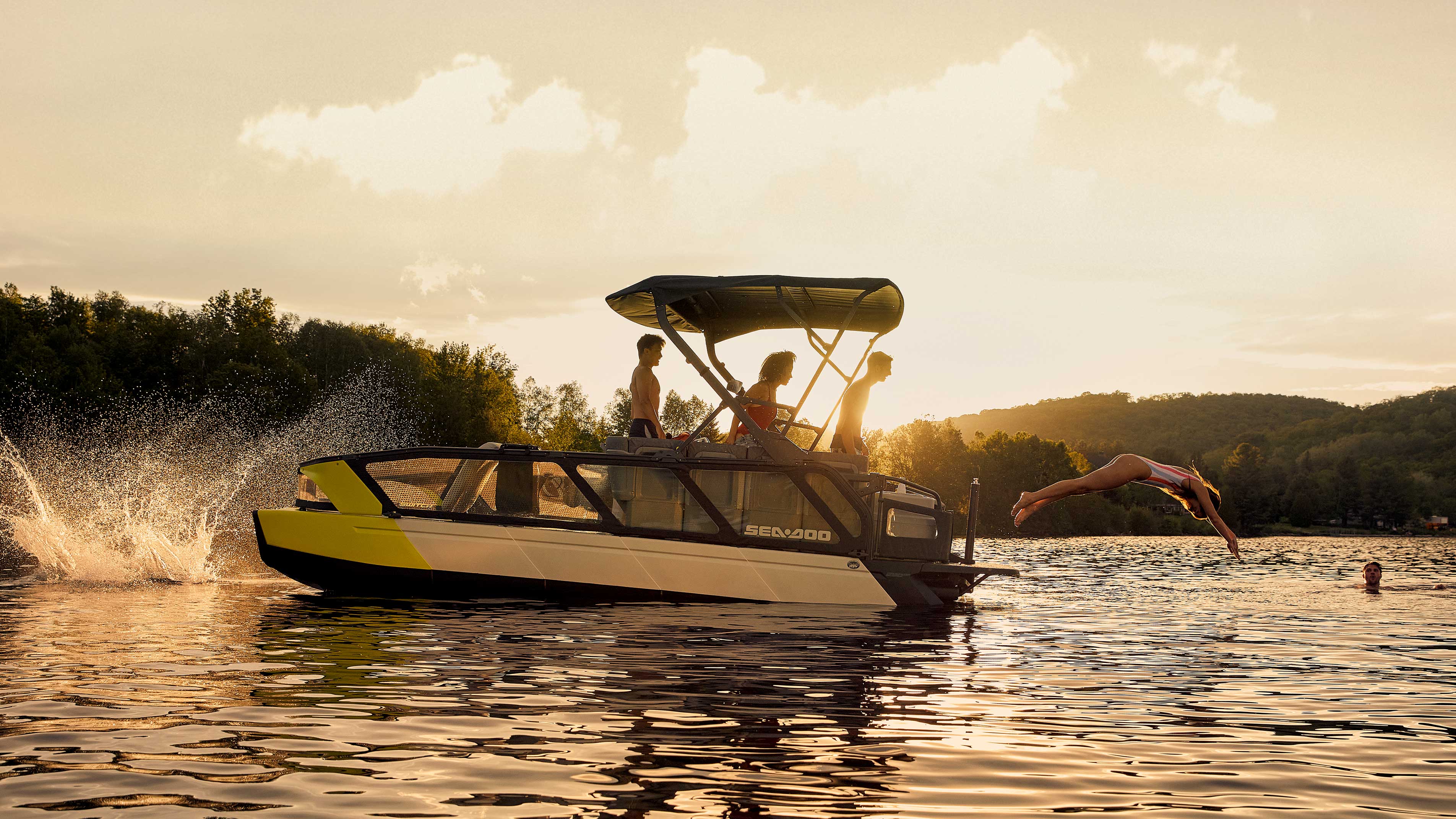
And to remain compliant with the strictest emission laws, Sea-Doo has engineered a high-flow catalytic converter-equipped exhaust system that also manages to reduce engine noise and drone. All Switch models are configurable with one of either three engine options: the 100-horsepower 1630 ACE, the 170-horsepower variant, and the supercharged-and-intercooled 230-horsepower 1630 ACE 3-cylinder four-stroke. The center hull – like a watercraft – contains the 29-gallon fuel cell and 1630 ACE powertrain. The hull literally sits inside of the deck, fastened together at what might be considered the bondline in a personal watercraft. Below the helm are the bilge and bilge blower controls, as well as that for the running lights and horn. All iTC (Intelligent Throttle Control buttons are direct carryovers, including IBR (Intelligent Brake & Reverse) and IDF (Debris-Free control). At speed, the different-length hulls come to plane a little differently, but all allow for a gentle inside lean when throttled into a corner.Ībove: The Sea-Doo runabout-inspired helm is surprisingly natural for the tritoon. The hull itself is progressive with a mild deadrise, featuring prominent shelved chines for the utmost stability. Cast from Sea-Doo’s proprietary Polytec polypropylene-material, the center hull sits 7.32-inches deeper in the water than the modular outriggers, keeping the jet pump engaged for continual thrust. īRP began by developing a configurable chassis that allowed for quick assembly, despite the desired vessel length or trim package. The longer of these two different-length platforms can be equipped with specially-equipped package groups, namely “Sport” and “Cruise” as well as wide variety of optional sub-packages. The 13-footers are exempt.īeing the world’s most popular personal watercraft magazine, The Watercraft Journal was invited to fly out to Lake Minnetonka, Minnesota to test drive a handful of Switch models – since there are three different-length platforms, those being 13, 16, and 19-feet (the latter two able to be fitted with a 2-foot swim deck, increasing the overall length to 18 and 21-feet when equipped).

The new catalytic converter-equipped exhaust comes on all 16 and 19-foot models. Employing its popular powertrains and Polytec materials, these jet-driven tri-hull pontoons are poised to shake up the pontoon industry.Ībove: Power comes via a selection of 1630 ACE Rotax engines a 100 or 170-horsepower naturally-aspirated version, or the supercharger 230-horsepower variant.

Wanting to address this segment square on the chin, Sea-Doo applied some of its Spark-mojo into developing a whole new segment of tritoons – the Sea-Doo Switch series.

Yet, it was one key element that stood out to the product planners and engineers at BRP: as amenities and performance options for pontoon boats increased, the pricing multiplied to the point that entry and mid-level buyers were pushed out of the market. Within a decade, pontoons calculated for a massive segment of the recreational boating community, and powersports manufacturers took notice. Those with access to calmer waters gravitated towards pontoons – and sportier tritoons – over the past decade, particularly as the quality of materials, accessories and ease of use all progressed. And of those sales, pontoon boats equated for the overwhelming majority. Well before Covid lockdowns encouraged tens of thousands of people to explore local lakes and waterways, recreational boat sales were already steadily climbing.


 0 kommentar(er)
0 kommentar(er)
